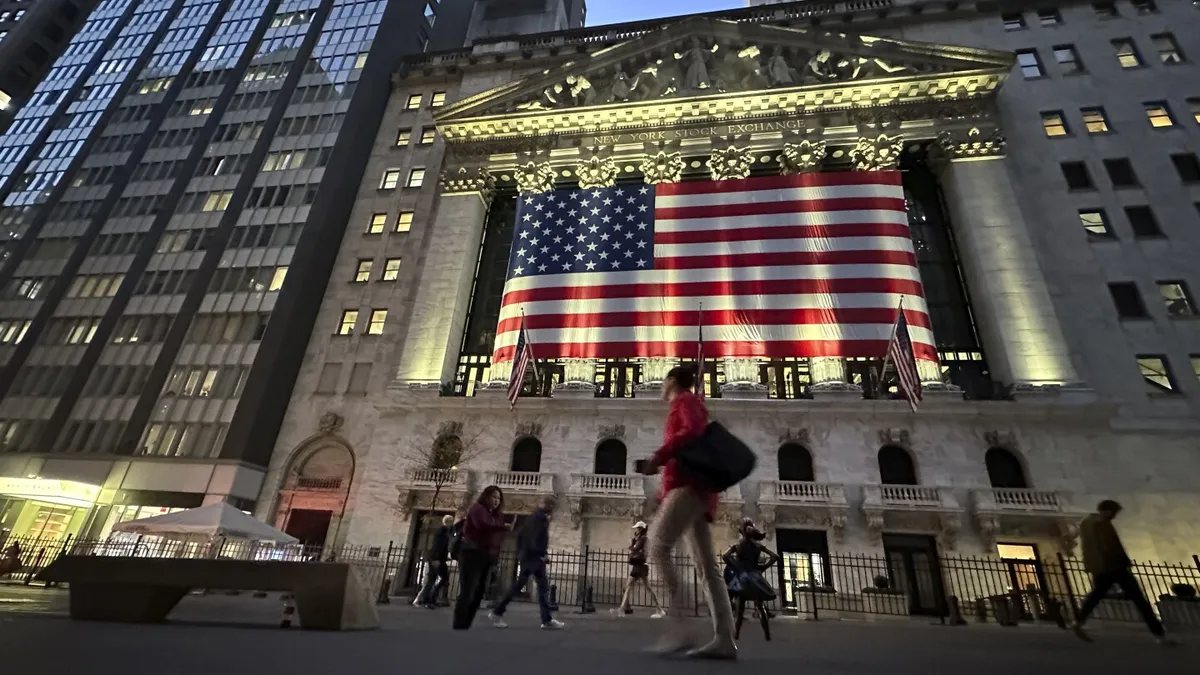
On Tuesday, financial markets around the world experienced a wave of relief as stocks began to bounce back from their historic losses. This recovery comes in the wake of President Donald Trump intensifying his trade war strategy last week. The S&P 500 index saw a significant increase of 3.7% during morning trading, although it remains over 14% below its record high established in February. Meanwhile, the Dow Jones Industrial Average surged by 1,388 points, or 3.6%, by 10:30 a.m. Eastern Time, while the Nasdaq composite climbed by 4.1%.
The positive momentum was not limited to the U.S.; stock indexes across the globe rallied as well. In Tokyo, the market rose by 6%, while Paris saw a 3.5% increase and Shanghai gained 1.6%. In addition to stock gains, the price of crude oil also rebounded after hitting its lowest level since 2021 on Monday. Bitcoin stabilized, rising back above $79,000 after dipping towards $76,000 the previous day.
Despite the substantial uptick on Tuesday, which could mark the best day for the S&P 500 since late 2022, analysts caution that more volatility is likely in the near future. The central concern revolves around how long Trump will maintain his stringent tariffs on various countries, which could increase prices for U.S. consumers and potentially slow down the economy. If these tariffs remain for an extended period, experts predict a possible recession. Conversely, if Trump can negotiate lower tariffs swiftly, the worst-case scenario may be averted.
There is still optimism on Wall Street regarding potential negotiations. Trump recently stated that a discussion with South Korea’s acting president was productive, leading to what he described as the "confines and probability of a great DEAL for both countries." Trump also mentioned that South Korea's top team was en route to the U.S. for further discussions, hinting at positive developments with multiple nations eager to reach agreements with the United States.
Japanese stocks particularly outperformed global markets following Prime Minister Shigeru Ishiba's appointment of a trade negotiator for discussions with the U.S. This move was reportedly based on an understanding between Ishiba and Trump, indicating a potential thaw in trade relations. Senior Global Market Strategist at Wells Fargo Investment Institute, Sameer Samana, noted, "It seems like we were very oversold, and there’s hope that things may de-escalate from here," while also emphasizing the need for caution as key countries continue to escalate tensions.
China responded to Trump's threats of increased tariffs with a commitment to "fight to the end," warning of possible countermeasures. The recent recovery in global markets shouldn’t be surprising; stocks rarely move in one direction indefinitely. Historically, some of the most significant gains in the market have occurred following substantial downturns. For instance, the largest single-day increase for the S&P 500 since World War II was an 11.6% surge on October 13, 2008, amid the Great Recession’s turmoil.
This historical context serves as a reminder for investors to avoid attempting to time the market. Selling stocks or long-term investments out of fear can lead to missing out on substantial recovery days. Trump's trade war represents a significant challenge to the globalization that has shaped the modern economy, contributing to lower prices but also leading to job losses in manufacturing as companies relocate operations overseas. Trump has expressed a desire to bring these factory jobs back to the U.S., a process that could take years, while also aiming to reduce trade deficits with other countries.
On Wall Street, health insurers played a pivotal role in driving market gains after the Centers for Medicare & Medicaid Services announced a stronger-than-expected increase in Medicare Advantage payments for the upcoming year. Stocks of major health insurers surged, with Humana jumping 11.8%, United Health climbing 8.3%, and Elevance rising by 4.8%.
In the bond market, Treasury yields rallied for a second consecutive day, recovering some of the sharp losses seen in recent months. The yield on the 10-year Treasury rose to 4.23%, up from 4.15% late Monday and significantly higher than 4.01% late Friday. Rising yields typically signal increased expectations for the strength of the U.S. economy and inflation.